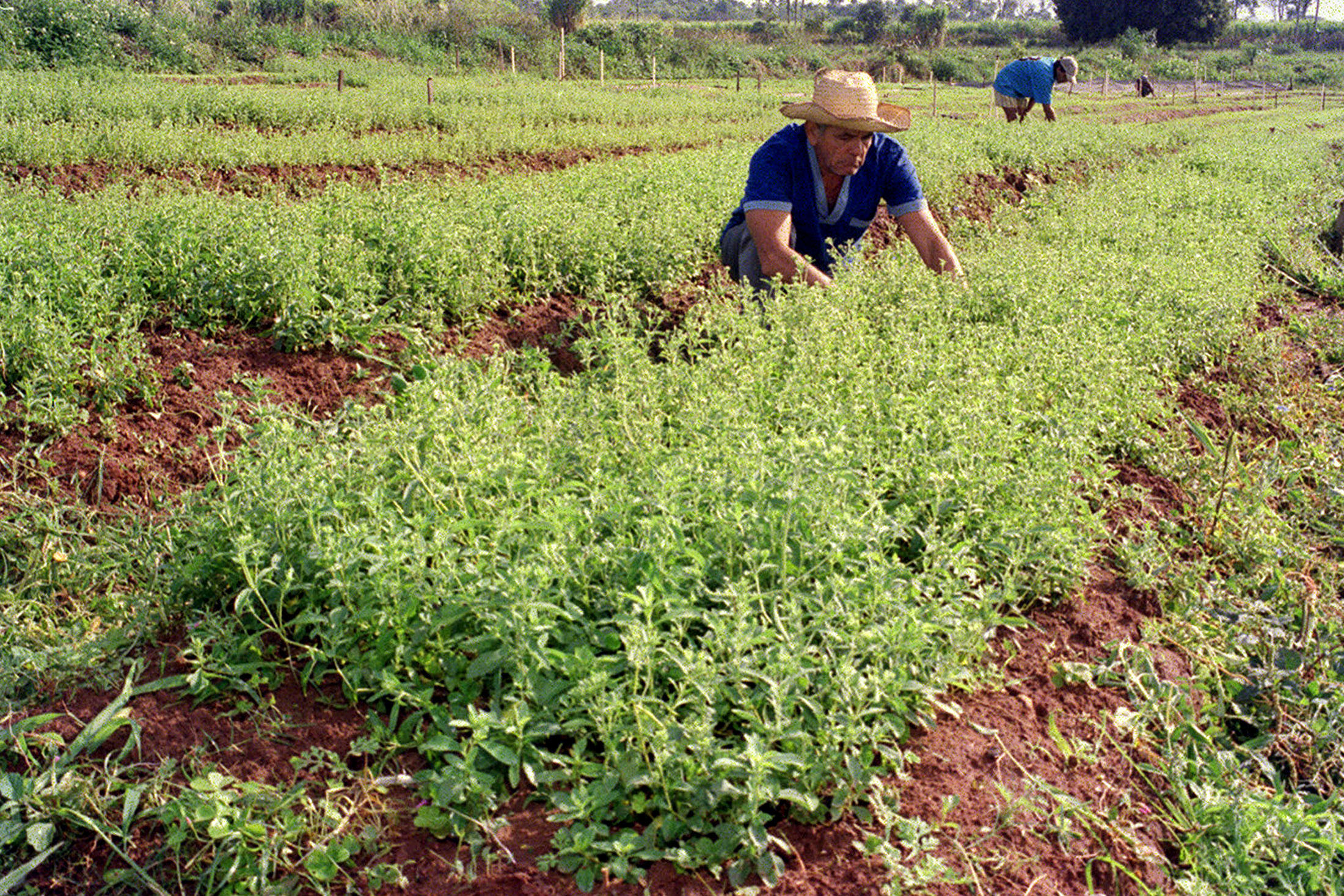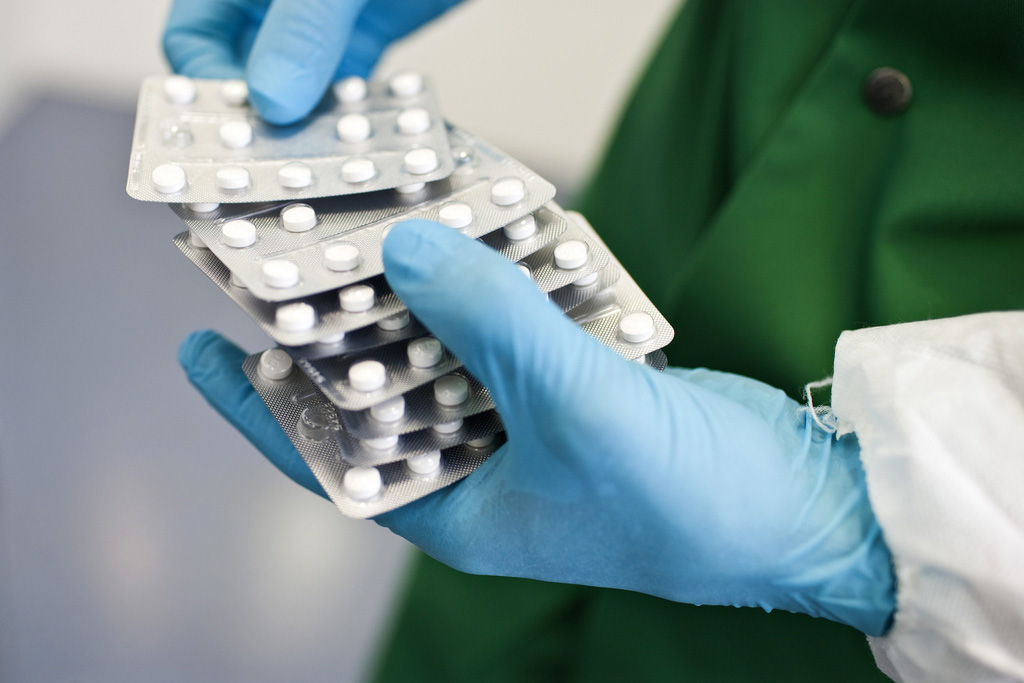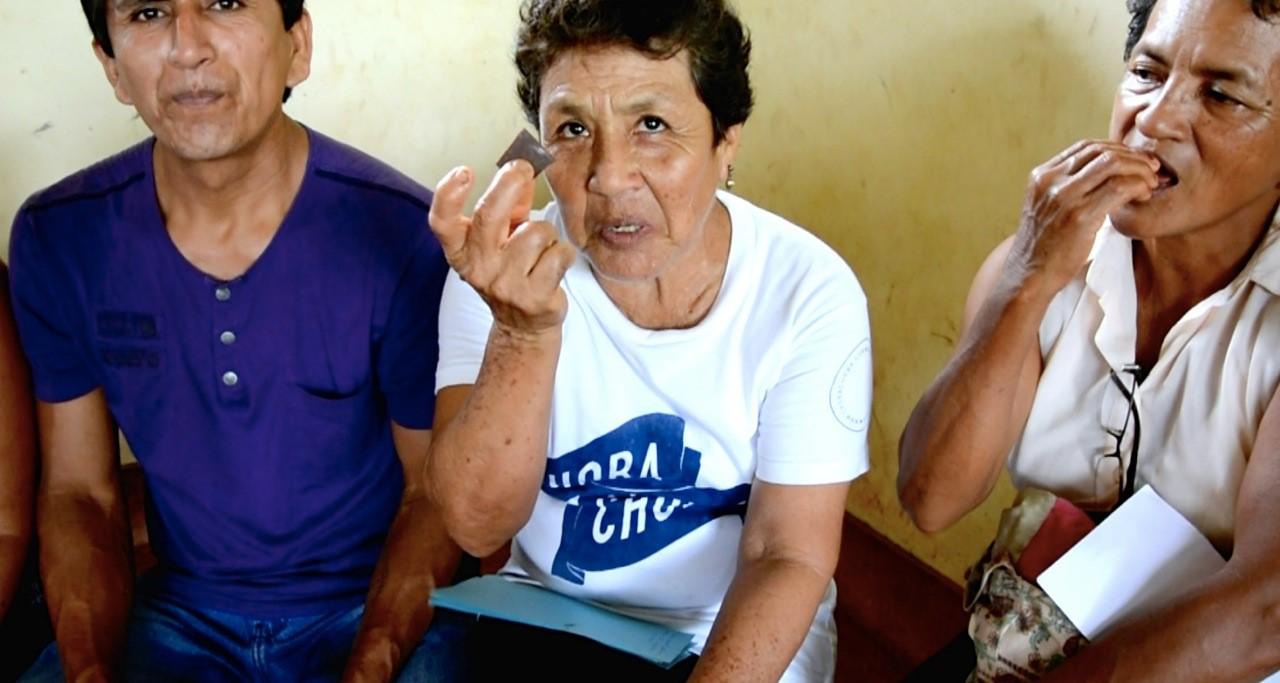Stevia: A Guarani miracle or nightmare?

The Paraguayan plant, now also grown in China, Japan and other countries, is sweeter than sugar, yet free of calories. Due to a boom in demand spawned by the food industry, businesses such as the Swiss firm Evolva are now turning to synthetic biology to reproduce chemical versions of stevia.
The leaves of the Ka’a plant have been known to Guaranis – who live on the border of Paraguay and Brazil – for more than a thousand years, but for generations were kept as a secret by Paraguay’s indigenous population. In Guarani, the plant’s name means “sweet herb”, which is fitting as it is 350 times sweeter than sugar.
The plant is, however, known to the rest of the world by its scientific name, Stevia Rebaudiana Bertoni, after the findings of a Swiss scientist.
Juan Barboza, president of the Paraguayan Stevia ChamberExternal link explained: “In 1887, Swiss scientist Moises Bertoni identified the plant for the first time. Soon afterwards, a Paraguayan chemist Olidio Rebaudi defined its chemical composition. The work of both of them explains the scientific name of Ka’a he’e.”
With its antioxidant, antiseptic, diuretic and healing properties, stevia could appear to be too good to be true. It is of particular value in the fight against obesity and diabetes, two of the greatest current threats to global health.
“Stevia, as a zero-calorie natural origin sweetener, can be consumed as part of a healthful diet and lifestyle. It does not contain any calories or carbohydrates nor does it affect blood sugar levels,” explained Priscilla Samuel, director of the Global Stevia InstituteExternal link in Oak Brook, Illinois.
These attributes have not gone unnoticed by the food industry, which uses sweeteners made from steviol glycosides for products such as Pepsi Next and Coca-Cola Life. In Switzerland, the sugar substitute is used in Ricola sweets and Beodrinx beverages.
Victim of its own success
Until the 1970s, when scientists began to suspect that sweeteners such as cyclamate and saccharine could be carcinogenic, stevia was still unknown to the global food industry.
Japan subsequently played a key role in making Ka’a he’e known internationally.
“About 40 years ago, a group of Japanese researchers discovered the plant’s attributes. They filled an entire vessel with Paraguayan stevia and shipped it home to begin planting it locally,” explained Barboza.
A few years later, “The Japanese ran into space problems, and decided to send the stevia to China, where the issue didn’t exist. Today, China is the world’s largest stevia producer, with some 25,000 hectares used for its cultivation, more than in Paraguay, which only has 2,000 hectares.”
Stevia is also now grown in other countries including India, Brazil, Argentina, Taiwan and Mexico, but supplies are not enough to satisfy growing global demand.
“Chemical stevia”
Due to health reasons, the United States, the European Union and Switzerland prohibit the import of stevia leaves, but do allow the use of steviol glycosides.
“The European Scientific Commission on Food came to the conclusion that the data available for stevia leaves was not sufficient for its use to be assessed safe for human consumption. Based on the data, a risk to human health cannot be excluded,” explained Eva van Beek, a spokesperson for the Federal Food Safety and Veterinary Office.
“The high purity stevia leaf extracts used in food and beverage products today are safe for human consumption, as shown by a compendium of over 200 scientific studies,” said Priscilla Samuel.
As a result, the market for sweetened food and beverages using stevia glycosides was estimated between $8-11 billion in 2015 – four times more than in 2010 – according to consulting group Industry ARC.
But for Barboza, growing demand for the sweetener has distorted the market, as multinational firms produce synthetic sweeteners not originating from stevia, without informing their clients. “We have warned at various national and international events that this is happening, because it is a fraudulent practice which seriously affects Guarani farmers and thousands of humble producers in other Latin American countries.”
Self-piracy and indigenous rights
Stevia leaves contain, albeit in very small quantities, steviol glycoside molecules that give them their sweet flavour. Firms specialised in synthetic biology employ genetic manipulation to create “sweeter” plants. Meanwhile, various products and extensive chemical processes are used to purify steviol glycosides (including filtrations with resins, salts, ion exchanges, refining and crystallisation). Processing methods are protected though patents. Most major food corporations now sell products using steviol glycosides as opposed to traditional stevia leaves, but the information is rarely indicated on packages.
This concern was shared by a group of experts from institutions including the Swiss-based NGO Public Eye, the independent group Pro Stevia Switzerland, the University of Hohenheim in Germany and the Centre for Rural Law and Agrarian Reform Studies and Research in Paraguay. In a 2015 study entitled “The Bittersweet Taste of SteviaExternal link” the group claims that the multinationals violate indigenous rights.
“Governments have now agreed – through the Convention on Biological Diversity and its Nagoya Protocol – that the holders of traditional knowledge have a right to benefit from the knowledge that they have developed. The United Nations Declaration on the Rights of Indigenous Peoples, which was adopted by the United Nations General Assembly, affirms indigenous peoples’ rights,” the study said.
According to François Meienberg, a Public Eye spokesperson, “The steviol glycoside ‘boom’ has gathered pace into a race to patent methods for producing steviol glycosides through synthetic biology, instead of producing them from leaves”. Consumers are misled into believing that they are benefiting from the plant originating from its natural state.
“This would mean that in the near future large companies selling or using steviol glycosides would no longer depend on the cultivation of stevia plants. And one of the frontrunners in this research is Swiss company EvolvaExternal link, in collaboration with CargillExternal link,” lamented Meienberg.
Evolva, based in Reinach, confirmed that later this year it will launch a product called Eversweet, whose molecules were identical to those of stevia.
Not all is bad
Neil Goldsmith, CEO and co-founder of Evolva, defended its product as a valuable substitute for sugar, offered without the downsides of stevia and steviol glycosides, and the bitter taste they have when used in higher doses.
It will reduce the environmental impact of the product overall needing less land, water and energy to produce the product, Goldsmith wrote via email. He gave assurances that Evolva’s goal was not to replace stevia, but to use Eversweet in products that are normally sweetened by conventional sugar.
In response to concerns about the impact of ‘chemical stevia’ on indigenous Guarani populations and other small farmers, Goldsmith said NGOs often avoid mentioning certain facts.
“Most stevia today is not really produced by smallholder farmers, but by more industrialised growers in locations such as China and southeast Asia. The romantic picture that is being painted is rather misleading.”
In its 2006 Agricultural and Development Plan, Paraguay’s agricultural ministry promoted stevia production. But the market for stevia leaves has been unstable. In 2011, Japan failed to import stevia leaves due to concern about the country’s foot and mouth disease. However in 2015, Japan changed its approach to announce an agreement for the purchase of all of Paraguay’s stevia exports.
The future potential of stevia glycosides is enormous. The World Health Organisation expects that in coming years, it will represent 30% of the global sweetener market. Companies specialised in synthetic biology are thus researching new ways to produce chemical substitutes that would not be reliant on weather variations or pests.
In order to promote better participation by Guaranis in returns from stevia and its byproducts, Public Eye said governments and companies should participate in an agreement that would be arbitrated by the indigenous people.
The organisation also called for the end of deceptive advertising that describes steviol glycosides as “natural” products.
Translated from Spanish by Paula Dupraz-Dobias

In compliance with the JTI standards
More: SWI swissinfo.ch certified by the Journalism Trust Initiative










You can find an overview of ongoing debates with our journalists here . Please join us!
If you want to start a conversation about a topic raised in this article or want to report factual errors, email us at english@swissinfo.ch.